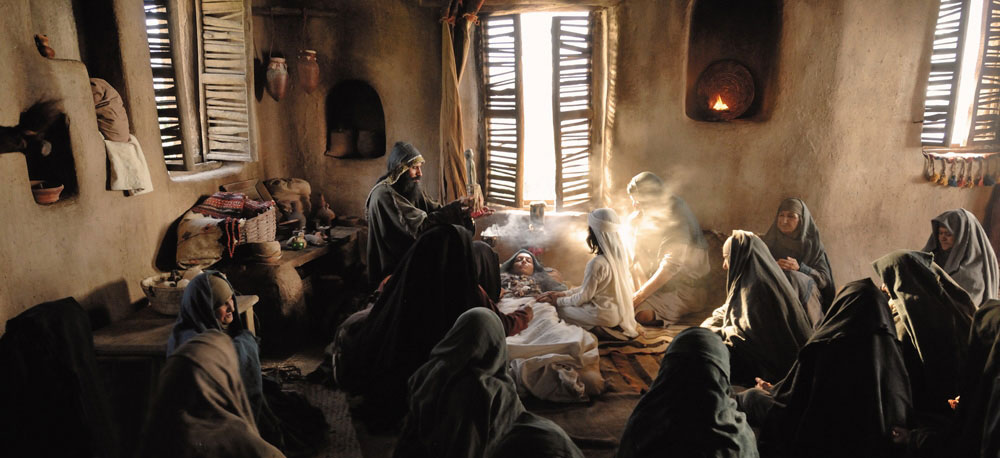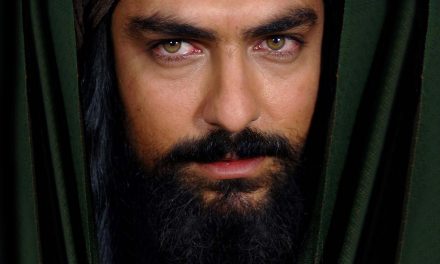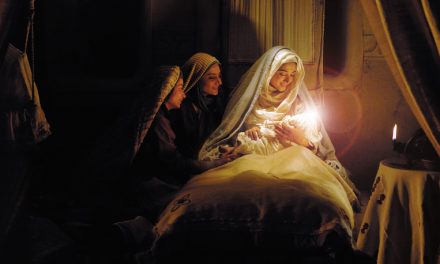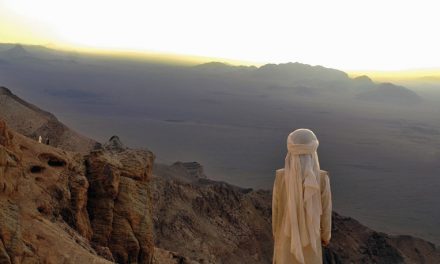In the name of Allah, the Beneficent, the Merciful
A Revealed Image (First Part)
[A Glance at Muhammad Messenger of God (pbuh)- a Film by Majid Majidi]
Before watching Majid Majidi’s Muhammad Messenger of God I always wish the late Ali Hatami were alive and made his film about Prophet Muhammad (pbuh), but after watching Majidi’s film I realized that this film must be made at this time by Majid Majidi and by using today technological facilities. Majidi is the one who, in previous years, when one of the pseudo-intellectuals of the country called the prophet of Islam a Poet and announced Quran “the result of poetic and fallible sentiments”, did not remain silent and stood against them and spoke frankly.
A Window into the Light
Majidi knows full well that what is important is observing the standards of artist’s action in each historical moment. He also knows what has led to many problems for many people and has misled them is relying on intellectual reasons and religious jurisprudence foundations with no attention to the standards. “Observing the standards of artist’s action” means simultaneously observing goals, priorities, weakening wrong and strengthening right.
Muhammad Messenger of God will be an important film in the IRI’s and in the world’s history of cinema. I am not speaking about the techniques used in this film, because technique is a time-dependent variable and, however, it could be argued that better than that can come in future. But my aim is to review “statements” in religious cinema which express the methodology of making film. Thanks to this film by which the statements can be reflected and perhaps in this way a window for defining religious cinema can be opened.
From Image to the Heaven
The first thing that we should pay special attention to is that “image” forms the base of cinema; an image that has been much discussed in philosophy of art and in aesthetics of different religions. Humankind, from the first days of making society, was constantly looking for a common language by which to communicate with surrounding world. He needed a simple language which could express common feelings and to be away from all usual verbal and dialect differences of speech. Such a language, upon expression in anywhere of the world, reveals a specific and equal concept and it can be said that this language is closer to unity.
This language, in its essence, carries “one” meaning in all cultures and dialects and this is the language of image. Upon hearing the name of “flower”, all humans have a common image in their minds, although formally has different forms, but in essence, the image refers to a shared meaning. Image language, unlike “word” which makes the concepts contracted and abstract, makes the concepts detailed and sensible and causes our understanding of everything more extensive. An understanding that is necessary for mankind and this necessity was pointed out by Egyptians years ago by inventing Hieroglyphic which was an image language.
With these all significant features of image language which have their own functions, we should not forget that image, somehow, seals the concepts in a particular form; that is, image makes a construction in which the audience “is closed”; an enclosure that is a kind of prison of “imagination”.
“Imagination” is a power which has high desire to both laziness and hedonism and if it is not trained, it, instead of being a bridge leading to the Invisible world (which is its main function) it will engage in excursion and in gaining experience in the Visible world. This excursion starts from “tone collage”, and after passing through “form collage”, it goes finally to “conceptual collage”, and a lighthearted man by these compositions is being hallucinated to being creative! He does not know that what he has made in its advanced stage is only indicating his unconscious mind not witnessing the Invisible.
Now we should find that how the artist can reduce the unconscious influence on his work, and how he can be sure that the Invisible that he has spoken about is a different experience of what we see in modern schools such as surrealism and existentialism; modern experiences which Majid Majidi’s Muhammad Messenger of God comes to conflict with.
Religious artist, undoubtedly, should have his own sacred experiences in life. If a filmmaker does not have religious immediate experience, he cannot make his audience to have the same experience only by dint of color and light and music. It means that an image is sacred if it creates sacred feeling in the audience. We know that when knowledge is associated with sense this association is the background of morality. It is an act that the film of Muhammad Messenger of God did well after it is raised.

Reality or Truth
There is no doubt that showing dirty hands’ and Bedouin people, and the brutality of that time had no difficulty for Majidi with his brilliant work experience (although this not showing provoked some criticism from many film critics), but it should also be considered that how would the dialectic between the dirtiness and the compassionate face of the prophet be seemed in a picture? So there is no way for a religious artist to find reality among the turbid truths, and if he wants to show dirtiness he should demonstrate it in its minimum amount in order to not to take their audience into ecstasy pleasure of sin nor into the disgust toward the world and society.
Of course the artist, in order to escape from moving toward nightmare, should do their utmost to avoid expressing spurious and stylized traditions. In other words, he must refer to religious original text i.e., Quran and traditions. This is what this film put serious efforts on it, even on the historical sequence of events and their number and quality. In other words, filmmaker should support right and weaken wrong. Majidi’s film certainly needed all these delicacies to express his right word and would speak of mercy and unity among religions in a world where the Prophet of Islam and Muslims are shown in incorrectly figures as warmonger and dogmatic and I think Majid Majidi has been successful in providing it.
Magic or Miracle
Remember “Macbeth” play where the witch sisters advertise the sentence of “fair is foul, and foul is fair”! And for misleading us they want us to breathe in such a mist and dumb air. An artist, in one way, can be like a witch who advertises statements such as “the respectful prostitute”, “freedom means slavery”, and even “a good murder and oppressor”, or abandon this sorcery and move towards the teachings of Prophet and behold the world with the eyes that Muhammad in Majidi’s film saw Kaaba for the first time, that is the eyes that can identify beauty in all over the cosmos even with pain and suffer (recall scenes of Ameneh’s death and Muhammad look at this issue).

[Writed by Sajad Mehregan & Translated by Yousef Qasemi – Thanks to Missis Barkhordari]




